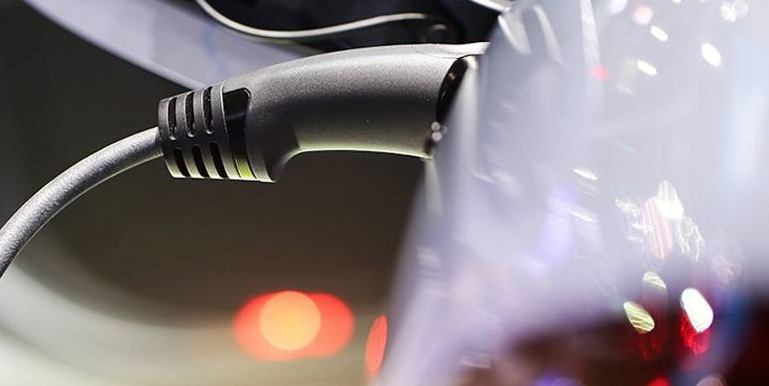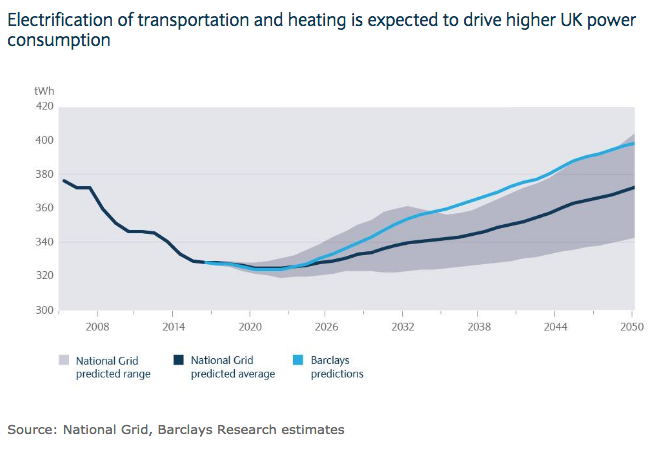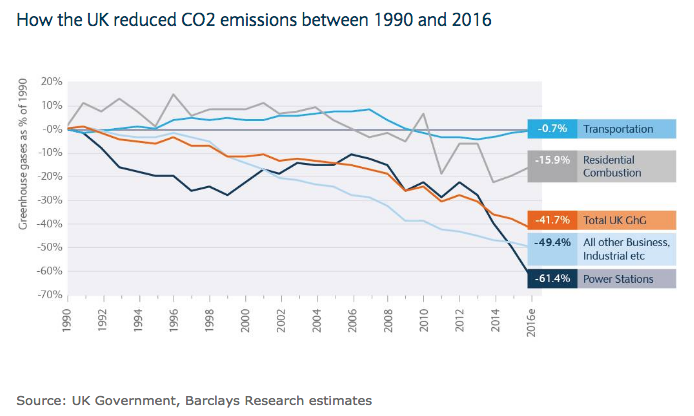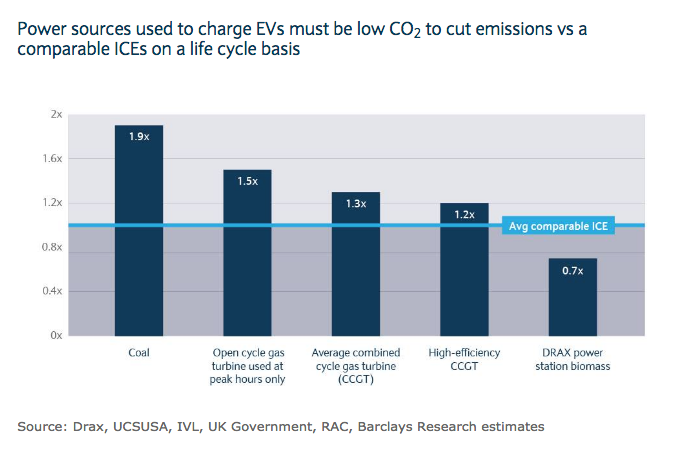Charging Up for the Energy Revolution
A dramatic ‘Energy Revolution’ is currently underway, both in the UK and around the world. This involves a shift away from polluting, fossil fuel-intensive power generation and towards embracing renewable technologies. This revolution will fundamentally change everything from how we power our vehicles to how we heat our homes over the coming decades. It also has far-reaching implications for infrastructure funding, which will also, ultimately, create investment opportunities.
Research by Barclays’ utilities sector analysts shows that a focus on energy efficiency in the UK has led to a fall of about 13% in demand for power since 2005, and these energy efficiency improvements are set to continue.
However, we predict that the continued electrification of transport and the heating of homes and businesses will start to outweigh ongoing efficiency improvements in around 5 years' time, and we estimate that demand for electricity will rise by 22% above current levels by 2050.
Electrification of transportation and heating is expected to drive higher UK power consumption
The growing need for electricity will almost inevitably lead to an increase in CO2 emissions, unless the development of renewable energy sources with a low-carbon footprint speeds up.
Putting the right ‘E’ into electric vehicles
The UK has committed to reducing greenhouse gas emissions by 80% between 1990 and 2050. While great strides have been made, two areas stand out for their lack of significant progress: ground transportation and heating.
Power stations produced 61% less carbon in 2016 than in 1990. By contrast, heating emissions were down a modest 16%, while ground transportation barely registered an improvement, with a paltry 0.7% reduction. Not only are they two of the largest carbon emitters – with combined CO2 emissions totalling 2.4x that of all UK power generation – they also consume huge amounts of energy.
How the UK reduced CO2 emissions between 1990 and 2016
Electric vehicles (EVs) are critical to reducing CO2 emissions, and they will dominate road transportation in the near future, especially following the UK’s ban on the sale of all internal combustion engine cars and vans by 2040.
Our research shows there is a catch, however: while electric vehicles produce zero emissions when driving, the amount of energy required to charge their batteries means that they are still a net contributor to pollution.
Even if the power to charge the battery of an EV is sourced from a highly efficient combined cycle gas turbine plant, when combined with emissions from vehicle and battery manufacturing, a mid-sized EV emits more carbon dioxide over its lifetime than an equivalent conventional vehicle with an internal combustion engine.
For electrified ground transportation to reduce greenhouse gases, electric vehicles will therefore have to draw much of their power from low-carbon sources, such as sun, wind, water, and biomass. If an EV is not charged by a low-carbon power source, total emissions are simply shifted geographically, and may even increase.
Together, improvements in energy storage technologies and investment in low carbon generation capacity, EV charging infrastructure, and smart energy systems will be critical to this evolution.
Power sources used to charge EVs must be low CO2 to cut emissions vs a comparable ICEs on a life cycle basis
For further information about Barclays' research offering, please contact researchservices@barclays.com.





